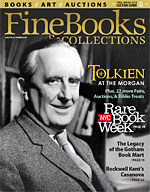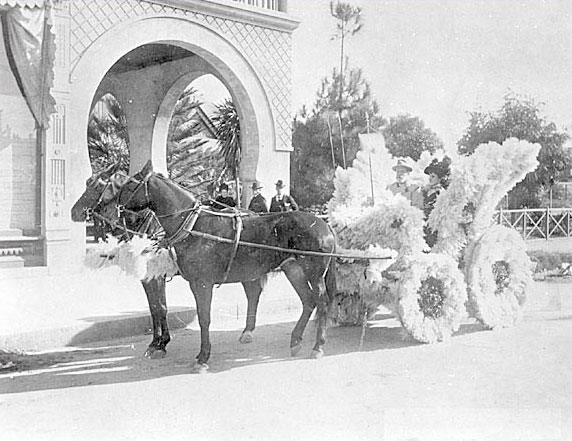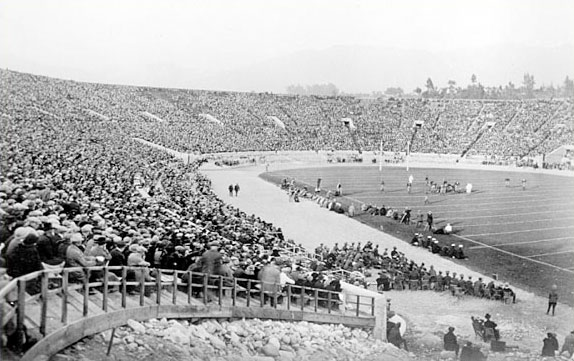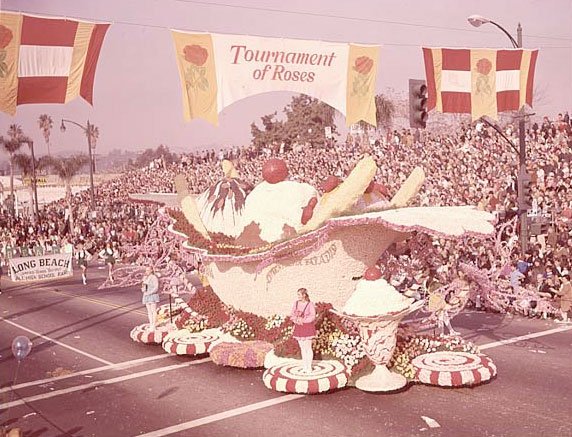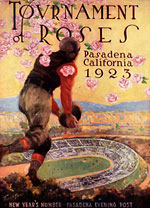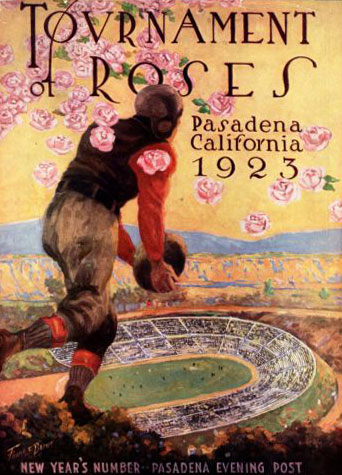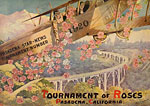California Dreamin’
For collectors of California kitsch, this year’s Rose Bowl is old news in the best sense. Vintage posters, programs, photographs and other artifacts commemorate this day of sport-and-pageant excess. The always lavish and often imaginative programs, dating back to the early 20th century, are a history lesson in Southern California’s transformation from frontier world to Disneyworld, from horse-and-hacienda to super-highway smog-athon.

Today’s $42 million Rose Bowl industry has its roots in an East Coast establishment tradition: the need to gloat. Some new members of Pasadena’s Valley Hunt Club wanted bragging rights back east. “In New York, people are buried in snow,” said Professor Charles F. Holder at a club meeting in 1890. “Here, our flowers are blooming, and our oranges are about to bear. Let's hold a festival to tell the world about our paradise.”
During the next few years the festival grew to encompass marching bands and motorized floats, ostrich races, bronco-busting demonstrations, and a race between a camel and an elephant.* Reviewing stands went up along the parade route and—as hoped—newspapers back east began to take notice.
In 1895 a volunteer association formed to take charge of the festival, which had grown too large for the hunt club duffers to manage. In 1902, tournament officials decided to add a football game. Home-state boys from Stanford went up against Michigan and lost 49-0. A decade of Roman-style chariot races replaced the humiliating sport of trying and failing to carry a ball down a field without getting mugged. But in 1916 football returned to stay, and the first modern football stadium went up, nicknamed the Rose Bowl.
The Tournament of Roses soon found a grand home of its own: the Italian Renaissance-style mansion (built 1906-14) built by chewing-gum czar William Wrigley, Jr. Wrigley’s widow donated it to the City of Pasadena in 1958, on the condition that it become the tournament’s permanent headquarters. Quite the corner office, with its ornate wood paneling, marble staircase and fireplaces, inlaid marble floors, crystal light fixtures—and let’s not forget 1,500 varieties of roses, camellias and annuals scenting every open window.
The mansion is also an extraordinary repository of historic souvenirs. Together these artifacts tell the absorbing story of a region that became a moral: Be careful what you wish for.
*The elephant won.


